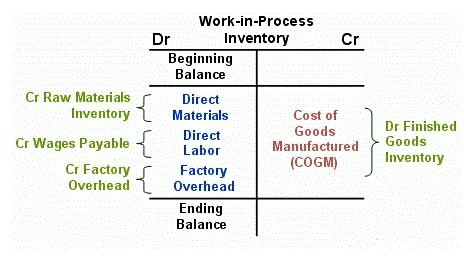Double Declining Balance Method DDB Formula + Calculator

Depending on the asset, you may want to consider using the double declining balance depreciation method. The Sum-of-the-Years’ Digits Method also falls into the category of accelerated depreciation methods. It involves more complex calculations but is more accurate than the Double Declining Balance Method in representing an asset’s wear and tear pattern. This method balances between the Double Declining Balance and Straight-Line methods and may be preferred for certain assets. Some companies use accelerated depreciation methods to defer their tax obligations into future years. It was first enacted and authorized under the Internal Revenue Code in 1954, and it was a major change from existing policy.

Calculating expenses from beginning book value to depreciation
With our straight-line depreciation rate calculated, our next step is to simply multiply that straight-line depreciation rate by 2x to determine the double declining depreciation rate. Certain fixed assets are most useful during their initial years and then wane in productivity over time, so the asset’s utility is consumed at a more rapid rate during the earlier phases of its useful life. Overall, consumer demand, production costs, and the supply of crude oil all interact to shape the landscape of alternative clean energy double declining balance method options. As consumer demand continues to grow, production costs decrease, and the supply of crude oil fluctuates, the transition toward cleaner energy sources becomes more feasible and attractive. However, a successful transition requires continued investment, supportive policies, and technological advancements to ensure a sustainable and reliable energy future. Most resources decrease in value over the long haul and may require a significant measure of support expenses to keep resources in reasonable use in later years.
- Many of the best accounting software options can help you with this, thankfully.
- This control over pricing and market access gave Telebras a dominant position, which resulted in limited choices for consumers and restricted innovation in the industry.
- Some companies use accelerated depreciation methods to defer their tax obligations into future years.
- DDB is best used for assets that lose value quickly and generate more revenue in their early years, such as vehicles, computers, and technology equipment.
- For tax purposes, only prescribed methods by the regional tax authority is allowed.
- However, if your target audience is students, you may need to offer discounts and charge lower prices.
Choosing Between a Standard Rate and an Accelerated Rate
- The intersection point of the demand and supply curve represents equilibrium.
- When the $80,000 is multiplied by 20% the result is $16,000 of depreciation for Year 2.
- If the company was using the straight-line depreciation method, the annual depreciation recorded would remain fixed at $4 million each period.
- The inventory costing $25,500 is held on hand for Jess Company on consignment.
- Also, if you want to know the other essential bookkeeping tasks aside from fixed asset accounting, you can read our piece on what bookkeeping is and what a bookkeeper does.
When you talk to a financial professional about depreciation, they’re going to recommend one of two methods. The two methods are the double declining method, and the straight line depreciation method. The Straight-Line Depreciation Method allocates an equal amount of depreciation expense each year over an asset’s useful life. This method is simpler and more conservative in its approach, as it does not account for the front-loaded wear and tear that some assets may experience. While it may not reflect an asset’s actual condition as precisely, it is widely used for its simplicity and consistency. But as time goes by, the fixed asset may experience problems due to wear and tear, which would result in repairs and maintenance costs.
- Most businesses, no matter the size, have assets that will lose their value over time.
- The double-declining balance (DDB) method is a type of declining balance method that instead uses double the normal depreciation rate.
- In the DDB method, the shorter the useful life, the more rapidly the asset depreciates.
- How do you calculate the double-declining balance method of depreciation?
Why would a company use double-declining depreciation on its financial statements?
Conversely, if the asset maintains its value better than expected, a switch to the straight-line method could be more appropriate in later years. He has a CPA license in the Philippines and a BS in Accountancy graduate at Silliman University. You can calculate the double declining rate by dividing 1 by the asset’s life—which gives you the straight-line rate—and then multiplying that rate by 2.
This results in a depreciation expense on the income statement in each accounting period equivalent to a part of the asset’s total cost instead of generating expenditure all at one go. Depreciation is a fundamental concept in accounting, representing the allocation of an asset’s cost over its useful life. Various depreciation methods are available to businesses, each with its own advantages and drawbacks.

Let’s assume that FitBuilders, a fictitious construction company, purchased a fixed asset worth $12,500 on Jan. 1, 2022. The company estimates that its useful life will be five years and its salvage value at the end of its useful life would be $1,250. (An example might be an apple tree that produces fewer and fewer apples as the years go by.) Naturally, you have to pay taxes on that income. But you can reduce that tax obligation by writing off more of the asset early on.
Depreciation Base of Assets
B) An expansionary monetary policy by the central bank would result in a lower interest rate, leading to an inward shift of the LM curve. This is because lower interest rates encourage borrowing and investment, thereby increasing aggregate demand and output. The lower interest rates also decrease the attractiveness of holding domestic currency, leading to a depreciation of the exchange rate, E.
[/restrict]